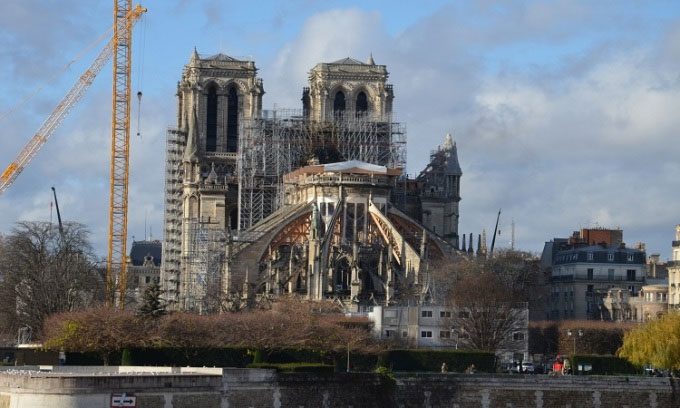Notre-Dame Cathedral in Paris is one of the most famous Gothic cathedrals in the world, constructed from the 12th to the 14th century in Paris, France.
During its construction, architects implemented numerous innovative techniques to create a building with bold and unique architecture. One of the most significant techniques was the use of iron to connect stone blocks during the original construction process.

Notre-Dame Cathedral during restoration after the fire. (Photo: Maxime L’Héritier)
A fire in 2019 devastated Notre-Dame Cathedral, but it also provided an unprecedented opportunity for researchers to explore the architectural structure. Researcher Maxime L’Héritier from the University of Paris 8 and colleagues published new findings in the journal PLOS ONE on March 15, 2023. At the time of its construction in the mid-12th century, Notre-Dame was the tallest building ever built, reaching a height of 32 meters. Previous studies indicated that this record was achieved through a combination of architectural achievements. However, despite the iron reinforcement method being very common in recent churches and restoration projects, experts were still unclear about the role of iron in the original construction of Notre-Dame.
The 2019 fire and the subsequent restoration allowed L’Héritier and his team to access previously hidden parts of the cathedral, revealing clues about the use of iron in construction. The research team collected material samples from 12 iron clamps used to secure stone blocks in various locations of the building, including the altar, the nave, and the walls. They applied carbon dating analysis, microscopy, chemistry, and architecture to gain a deeper understanding of these clamps.
The analysis results indicated that iron clamps were used at the earliest stage of the construction of Notre-Dame in the 1160s, making it the first building to use iron clamps in its structure. Combined with other archaeological and historical insights about that period, the analysis provides information that enhances understanding of iron trading, exchange, and forging activities in 12th and 13th century Paris. For instance, many clamps seemed to be forged by welding two pieces of iron sourced from different supplies.
According to the researchers, further analysis of the samples at Notre-Dame and the database on the history of iron manufacturers in the region is needed to confirm and expand findings related to the iron market in medieval Paris.


















































